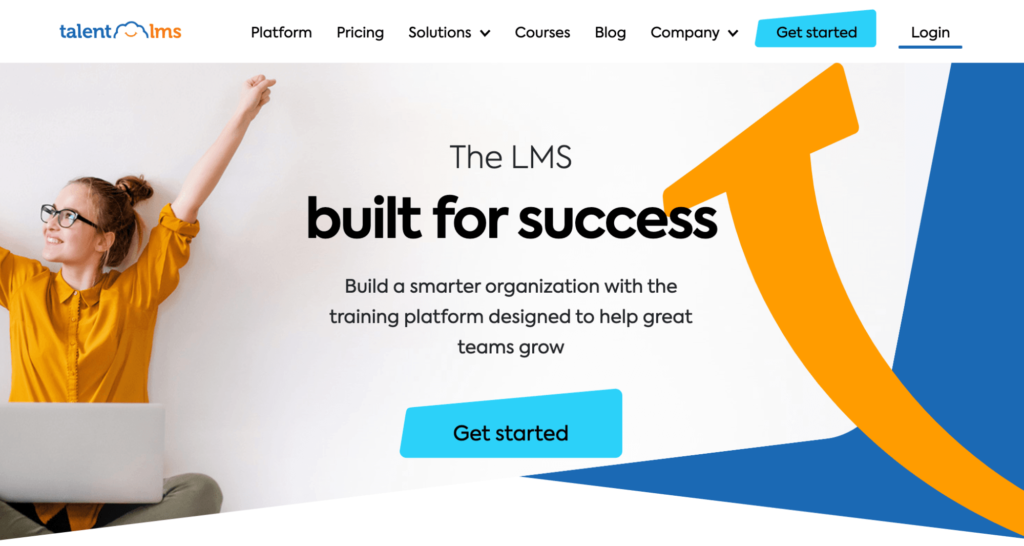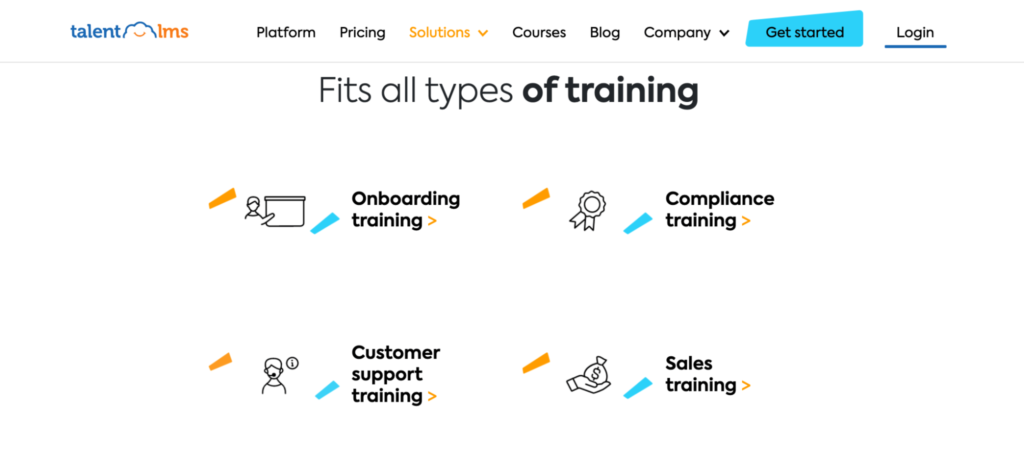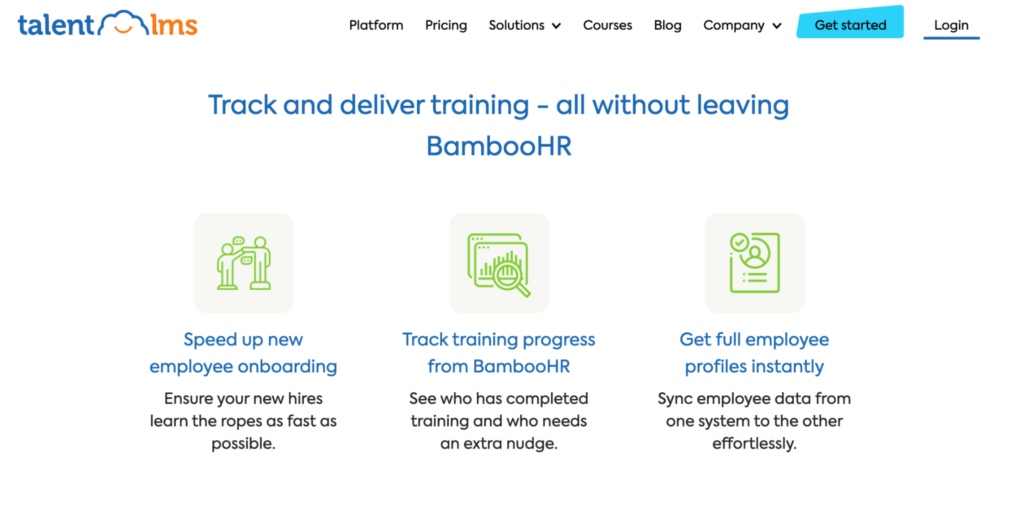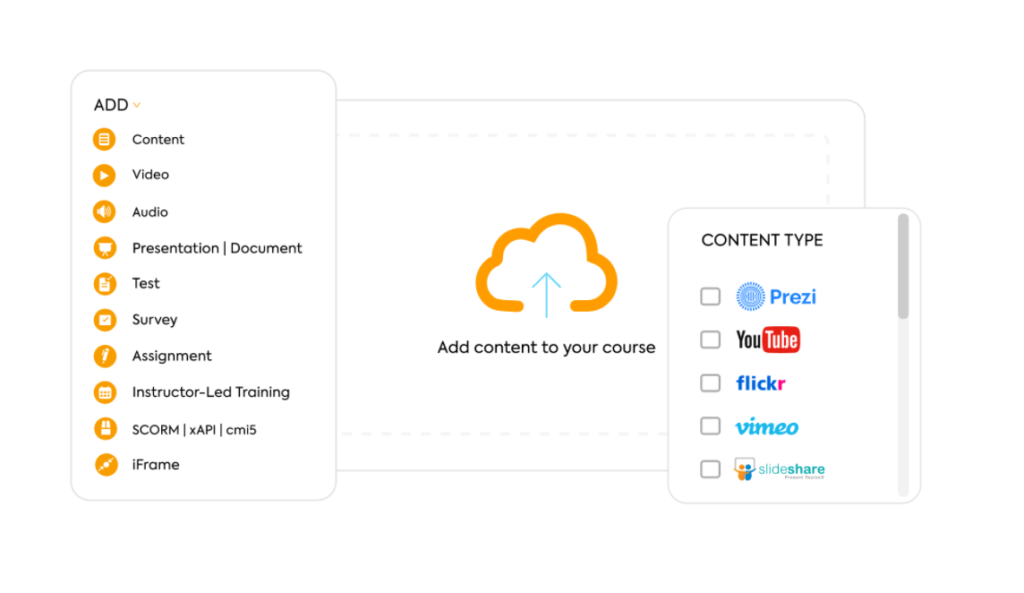Disclosure: This content is reader-supported, which means if you click on some of our links that we may earn a commission.
Employee training can make or break the success of an organization.
This in-depth guide will teach you everything you need to know about employee training, including its importance, quick employee training tips, and long-term employee training strategies.
Why Employee Training Is So Important
Well-trained employees have the skills, knowledge, and expertise required to perform at a high level. They’re more productive, provide better customer service, and make fewer mistakes.
An employee who has been appropriately trained can elevate the performance of everyone around them.
Conversely, poorly trained employees can drag your business down. In certain industries, untrained employees can even lead to workplace accidents and serious injuries.
Aside from the obvious benefits of employee training, other things must be considered here. The initial training for new hires sets the tone for the duration of their employment.
Your training process and how you approach employee training significantly impact the way your staff shows up to work every day.
Good training policies set your employees up for success. If they run into roadblocks or have questions in the future, they’ll be more inclined to ask for help and get the answers they need.
But if your training process is sporadic or inefficient, your staff might develop the “I don’t care” mentality moving forward.
In a perfect world, once you tighten up your training policy, you can put everything on autopilot. Costs associated with training new hires will decrease, and they’ll retain information quicker.
This can set up a learning culture, where employees are constantly helping each other and always striving to get better.
Here’s a great example of employee training that explains how a real company prioritizes training to drive business results. Tenaris is a manufacturing company with over 22,000 employees. To show its commitment to employee training, the organization launched TenarisUniversity.
The goal of TenarisUniversity is to support employees throughout their entire career, long beyond the initial hiring process. They offer job-specific training that prioritizes the learning experience. TenarisUniversity has special programs and partnerships that allow employees to work at their own pace and measure their skills.
TenarisUniversity provides more than 2.2 million training hours per year. 36% of those training hours are dedicated to health, safety, and the environment—crucial for manufacturing.
Quick Tips to Improve Employee Training Today
Employee training is typically considered a long-term and ongoing business initiative. But don’t get overwhelmed. A few quick tips you can start doing now will help you get started right away.
These quick wins will ultimately help you build the momentum required to have long-term employee training success.
Tip #1 — Use Employee Training Software
Successful employee training all starts with the right tools. So before you do anything else, make sure you’re equipped with the best training software.
Training software is the modern way to keep your staff engaged during training programs. It eliminates outdated paper training manuals and can even help your staff learn at their own speed.
The best part about using training software is that it works for the initial onboarding process and ongoing employee development alike.
TalentLMS is our top recommendation in this category.

The software can accommodate the employee training needs for businesses of all shapes and sizes. There’s even a free plan for small teams of up to five users. Paid packages start at just $59 per month.
TalentLMS has solutions for onboarding training, compliance training, sales training, partner training, remote training, external training, and more.
The platform even offers industry-specific solutions across retail, manufacturing, healthcare, technology, education, telecommunications—the list goes on and on.
Getting started is easy, and scaling is a breeze. Once you’ve signed up for employee training software, everything else will fall into place.
Tip #2 — Assign Mentors During the Hiring Process
Starting a new job is stressful. You need to have some empathy for your employees and try to understand what they’re going through. One way to set them up for success and make their lives easier is by assigning them a mentor.
Even if a new employee has a training manager, mentors can be an additional resource at their disposal.
This quickly makes your new hires feel like they’re part of the team, as they’ll always have someone to lean on if they have any questions or need help.
Mentorship programs also relieve some of the burdens from training managers. The training staff can focus more on job-specific training, while mentors can be available for other questions outside the day-to-day tasks of the job.
Allow your existing staff to volunteer to participate in the mentorship program instead of just dumping a new employee in their lap goes a long way. If the mentors aren’t eager and willing to be a resource, then it defeats the purpose.
Tip #3 — Cross-Train Employees
Start cross-training from the beginning. There’s a fine line between overwhelming your staff and teaching them multiple things simultaneously.
You don’t want to cram a career’s worth of training into a week, but you also don’t need to dedicate all of the training to one specific task, department, or initiative. For example, new hires can spend the first half of the day on sales training and the second half of the day on compliance training.

It’s also beneficial to cross-train your staff across different roles, departments, and responsibilities. This makes them much more valuable to your organization and increases their skillsets.
Here’s an example: Let’s say you have a retail store. You can train people in the warehouse to work the register or train sales staff to make also do inventory.
Then if people get sick, go on vacation, or leave the company, you’ll have existing employees that can fill in those vacant positions or cover them temporarily until a new person is hired and trained.
Cross-training your staff also opens up new avenues for advancement. If someone in the sales department is trained in marketing and then shows an aptitude and interest in marketing, you’ll have a great resource when you need to hire or promote marketing staff.
Tip #4 — Start Onboarding Before the First Day
Lots of companies start the employee onboarding process on the first day of work. But this puts you at a disadvantage when it comes to employee training.
Let new hires get all of the administrative onboarding stuff out of the way before they start. They can fill out I-9s, employment contracts, set up direct deposit, and handle other tedious HR tasks before day one.
So when it’s time to start working, they can jump straight into training.
Not only does this help speed up the training process, but it also improves the quality of employee training. Your staff will be much more focused on the training lessons if they don’t have a backlog of paperwork to fill out.
TalentLMS supports dozens of integrations, including HR software like BambooHR.

This makes it much easier for you to streamline the employee onboarding process. You’ll also be able to track the training status from your HR software.
Tip #5 — Use a Mix of Training Materials
Not everyone learns the same way. So just emailing out a slideshow and calling it a training manual likely won’t get the job done.
TalentLMS offers a wide range of content types to put in your training courses. This includes text, video, audio, presentations, documents, surveys, assignments, and more.

The platform even supports live lessons from instructors, tests, and quizzes. You can use it to customize every aspect of your employee training programs.
In addition to reaching employees who learn better using different materials, mixing things up also drives more engagement.
Think about it. Nobody wants to spend 50 or 100 hours looking through a PowerPoint presentation. But when you break those hours up into videos, tests, audio lessons, and live training sessions, it keeps your staff engaged for the duration of the required training hours.
Long-Term Strategies For Employee Training
Beyond the quick tips mentioned above, other strategies will take a bit longer to implement. These employee training strategies require more work, but the payoff is well worth it.
Strategy #1 — Promote a Learning Culture
Changing your company culture isn’t something you can do with the click of a button—it takes time. It starts with leadership and trickles down the ladder to your newest hires and interns.
You need to set up a company environment where employees are encouraged to ask questions and get better. Having the right resources at their disposal makes it more accessible.
It’s easy to be distracted by the day-to-day aspects of running a business—whether it’s production, operations, meetings, financials, and whatever else is on your plate. But you need to show your employees that learning is a top priority.
Once you’ve established this type of culture, employees will be excited about training sessions.
They won’t treat it as something they have to do but rather something they want to do. There’s a big difference in attitude when approaching training with a “want to” mentality.
Strategy #2 — Foster Ongoing Training
This strategy piggybacks off of our last one, but it’s worth mentioning on its own.
It’s a common misconception that employee training is designed only for new hires. This is simply not true. You should have ongoing training for your staff for the duration of their employment.
Some ongoing employee training might be mandatory. But you should also offer optional training with perks for participation.
To do this, you need to provide your employees with an incentive for ongoing development. Maybe it’s a one-time bonus for achieving specific credentials or obtaining a certificate. Or perhaps you’ll offer restaurant gift cards or free hotel nights to your employees who participate in mentorship programs.
Whatever the case might be, these types of incentives give your staff a reason to willingly enter employee training programs long after they’ve been hired.
Strategy #3 — Measure Your Training Results
Putting all of these steps and strategies into place is a great start. But the only way to truly know whether your new training methods are working is by looking at the numbers.
First, you’ll want to look at the real-time progress of training programs. This will give you a snapshot of how far along people are progressing in various programs.
But then you’ll want to zoom out a bit and look at things from a big-picture perspective. What percentage of your employees are completing optional programs? How has the training directly impacted your business?
For example, you could measure workplace safety incidents over time to see if the number has decreased since implementing new safety training programs. Look at metrics like employee turnover, employee happiness, and eNPS.
If you’re not measuring the results, it’s impossible to know if your training has been effective. But you’ll need a decent amount of data to draw any real conclusions, which takes time.
Strategy #4 — Know What Your Employees Need to Know
To be clear, this strategy can’t be applied to every business—at least not in its entirety. A CEO running a global operation with 10,000+ employees shouldn’t be expected to know each job and how to do it.
But for small and mid-sized businesses, this can really make an impact on long-term employee training initiatives.
Leaders well-versed beyond their direct responsibilities are an asset. But it also sets the tone for other employees.
Avoid the “I don’t need to know this stuff” mentality, or it will trickle down the chain. If employees don’t see leaders going through training, they might take the same approach when promoted to a leadership role one day.
Strategy #5 — Train Your Training Managers
Training managers should be trained on how to train employees—let that sink in.
In this case, we’re referring to general training courses, not courses associated with your specific business or industry.
The results of training programs will only be as good as the instructor. So if the instructor isn’t doing a good job, the trainees will suffer.
There’s a big difference between telling someone what to do and training them. The latter takes time to master. Working with your training managers should be an ongoing process.
Next Steps
Employee training is just one aspect of success in the workplace.
Before you can start training anyone, you need to recruit and attract top-level talent. The best recruiting software will make this process much easier for you and hiring your team.
Once you’ve hired employees, it’s important to make sure the onboarding process goes as smoothly as possible. Check out our guide on the best HR software for help with this.
With improved recruiting and onboarding, it’s much easier to facilitate employee training.














